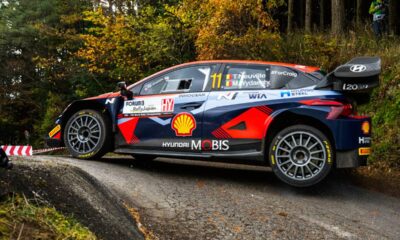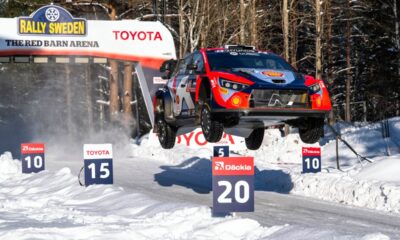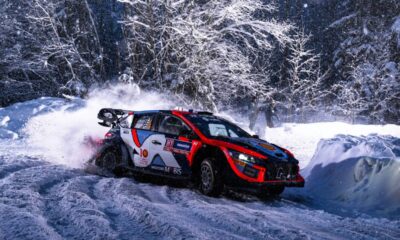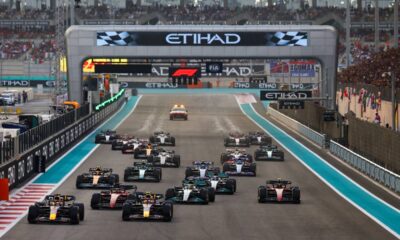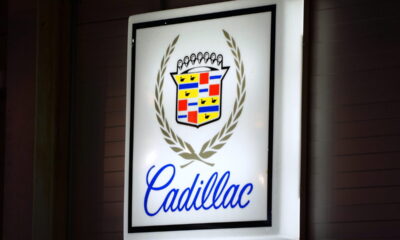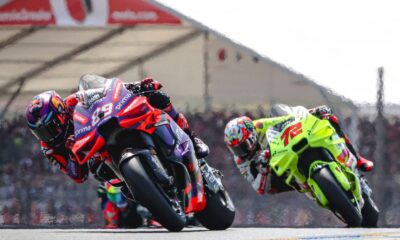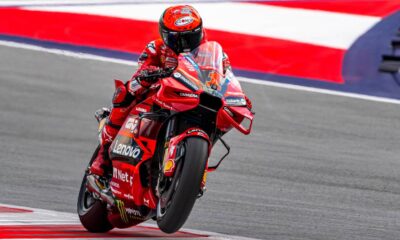Motorsport
Lancia Martini Racing or the most successful WRC team ever. How did time go with the absolutely iconic racing brand?
Lancia Martini Racing – that’s history itself. Lancia is a concept that evokes many across motorsport. And it’s an absolutely iconic brand and the most successful rally team of all time.
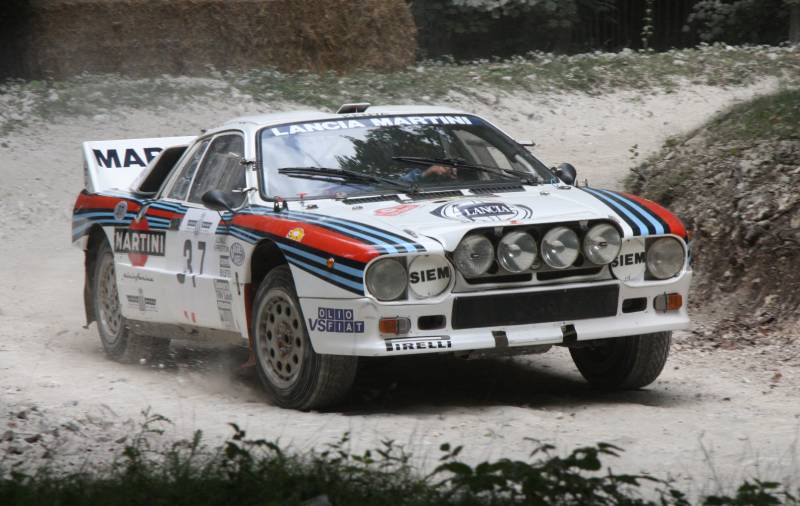
Lancia Martini Racing – that’s history itself. Lancia is a concept that evokes many across motorsport. And it’s an absolutely iconic brand and the most successful rally team of all time.
The Lancia Rally Team, or Lancia Martini Racing, is a name that for many fans of not only rallying, but motorsport as a whole, conjures up passion and memories of great victories.
During its time in the WRC, Lancia has won ten constructors’ championships and six drivers’ championships. And these ten overall championships are a number that no team has yet been able to match.
Looking at the historical tables, the closest pursuer is Citroën Total. They won their titles mainly at the start of the new millennium and then between 2008 and 2012.
The French stable has won eight titles in the top WRC category among the teams and will not be able to win another one right away. Citroën currently has no team in the Rally1 class.
Beginnings in the WRC
One of the Italian constructor’s earliest successes in the WRC was the 1974 championship title, specifically with the Lancia Fulvia. However, Lancia also achieved two World Championship titles in the following two years.
It should be noted that the official World Rally Championship began with the 1973 edition, and for the next three years, drivers’ individual results were not counted in the final standings.
The bottom line is that the first world champion among drivers was in 1977 the Italian Sandro Munari, who raced for Lancia. By then, however, the WRC was already dominated by the Fiat team with the Abarth 131, which replaced Lancia at the top of the Constructors’ Cup.
Group B & Group A
To fully understand Lancia’s impact and where its greatest strength lay, or why the team was so successful in later years, it is necessary to realise that the golden era of the 1980s was divided into two main categories.
The first was Group B, officially named Group B, which appeared in the World Rally Championship in 1982.
Notably, their predecessors included cars like the Lancia Stratos and the Alpine-Renault A110, which dominated the inaugural edition of the official World Championship in 1973. Interestingly, the rally cars back then used turbocharged engines, which the teams placed in the rear seats.
However, in 1982 the FIA lifted all restrictions and allowed the production of special cars for rally events.
One of the first cars of this new era was the Lancia 037 – still rear-wheel drive. In short, these were cars with around 500 horsepower, Kevlar bodywork, significantly lightened suspension and a shortened wheelbase.
The Italian team was the very first to put a rear wing on their car. But this era didn’t last long. In 1986, the FIA banned the concept altogether, for very serious reasons. The race cars were too fast, too light and too dangerous in terms of handling.
After the tragic accidents of Henri Toivonen and Joaquim Santos and as a result of several collisions directly with spectators, the Group B era was immediately halted. Santos’ crash in particular bears the measure of one of the most horrific crashes in motorsport.
It’s 5 March 1986 and the race is in Portugal. During the opening stage, Santos tries to avoid a couple of enthusiasts, only to lose control of his Ford at high speed and come to a stop against the crowd. Needless to say, three of them were killed on the spot and another 30 injured.
What made it all the more ironic was that the competition management didn’t even want to hear about cancelling it, despite the utter tragedy that had taken place in Portugal. However, under pressure from other teams, the management and promoters cancelled the rest of the stages.
However, the 1980 World Champion Walter Röhrl declared that we will never experience anything better. In his opinion, Group B was exceptional and mixed romance with brutality.
However, after the banning of Group B, the FIA needed to come up with a different, and therefore new, concept for the 1987 season. And so Group A was born. Compared to the previous category, this concept was based on strict regulations – especially in terms of performance, aerodynamics and car weight.
In addition, these restrictions helped designers to reduce overall costs and encouraged more private teams to participate in the World Rally Championship.
With the new era came cars that graced the course of each stage with their capabilities. And the Lancia Delta Integrale was one of them. The Italian team, by and large, incorporated the new technical regulations best of all, which then proved to be a key moment for the years to come. But apart from the Lancia, the rally races of the time also featured other great cars, such as the legendary Toyota Celica GT-Four or the Mitsubishi Lancer Evolution.
The first half of the 1980s
After the 1974, 1975 and 1976 titles, the team experienced a bit of a downturn, at least in terms of championship wins. In 1982, however, a major event occurred – the Martini Racing and Lancia teams joined forces, resulting in the Lancia 037. Moreover, the partnership between Lancia and Martini in the World Rally Championship was one of the longest and lasted until the end of the 1992 season.
The 1980s, however, marked the entry into a new era of the WRC, with cars getting faster, noisier thanks to new regulations and it’s hard to imagine another period in which racing cars evolved so much. Or as we write above – the golden era of Group B.
But the Lancia 037 was only the beginning of a glorious collaboration and the so-called “calm before the storm”. The fourth championship title was won by the Lancia Martini Racing team in 1983.
After that, the Audi team came out on top the following year and triumphed in the Peugeot Sport Constructors’ Cup for two seasons in a row, but then the eyes of all fans were on the years to come. Although in the 1986 season, the Italian constructor was on the podium in every race.
1987 was the beginning of a dominant era for Lancia Martini Racing.
1987 – 1992 or Lancia’s total domination
The Lancia Delta Integrale, or the six-year unbeatable car that took advantage of entering a new era in the form of Group A. Lancia optimised its four-wheel drive system and used a 2.0-litre turbocharged engine.
It was during this six-year period that none other than Lancia Martini Racing won the title. Only in the drivers’ championship was Lancia’s dominance tamed by one driver who later raced for Citroën Total and whose son now races for Ferrari in Formula 1. That’s right, we’re talking about Carlos Sainz, who won the world championship in 1990 and 1992.
Otherwise, however, it was a period that was clearly dominated by the Italian stable. The 1987 and 1992 seasons were rounded off by Finnish driver Juha Kankkunen, while Miki Biasion won two championships in 1988 and 1989.
It should be noted that Lancia’s factory team officially left the World Rally Championship at the end of the 1991 season, yet the private team Jolly Club Martini Racing Delta, which was still supported by Lancia, claimed another Constructors’ Cup title in 1992, the tenth overall for Lancia. This made the Italian team the most successful in the history of the WRC.
The final full stop
1993 was not only Delta’s, but also Lancia’s last year of competition in the WRC. At the end of the 1993 season, Lancia left the World Rally Championship for good, ending the team’s 20-year run at the top of the sport.
It should be noted, however, that the 1993 season was a very bitter affair for Lancia. The Italian team was literally rolled by its biggest competitor, the Ford Escort, with Lancia’s best result being a second place finish at the Acropolis Rally.
The Jolly Club team withdrew from the World Championship even before it ended. However, the Italian team has achieved 46 victories in that time, and the record of six titles in a row has never been bettered. Lancia also created a truly iconic rally car.
Sources

-
Motorsport4 days ago
Jorge Martín is rewriting history! the 26-year-old Spaniard became the new MotoGP World Champion, Bagnaia succumbed despite his best efforts
-
Motorsport5 days ago
Bagnaia keeps hopes of a miracle alive with MotoGP sprint win in Barcelona, third-placed Martín one step away from title
